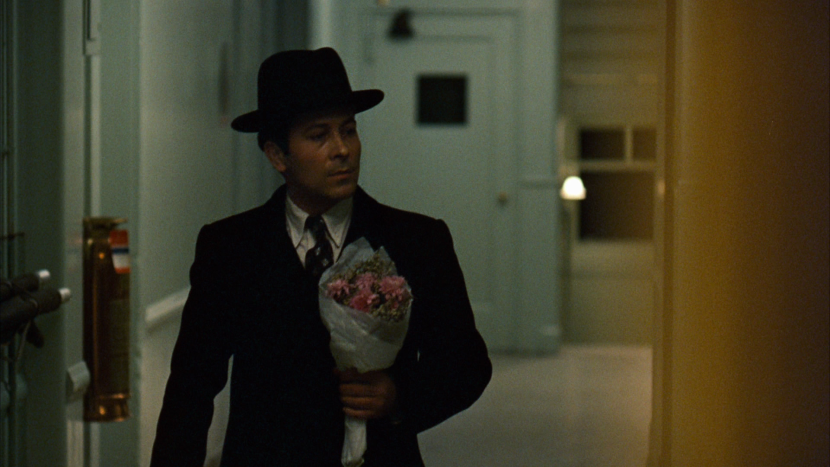How do filmmakers convey character or plot development without using dialogue?
Quick Answer: Though some of our favorite films are defined by their grandiose speeches and hilarious banter, a number of filmmakers have reduced or eliminated dialogue with fascinating results. But how do filmmakers convey action, emotion or change without words? In scenes from their respective films The Godfather and World War Z, Francis Ford Coppola and Marc Forster exhibit their visual storytelling talents to devastating effect, proving that in depicting the vicissitudes of human nature, words are not always necessary.
Though some of our favorite movies may be defined by grandiose speeches and mile a minute banter, it is important to consider film’s beginnings as a visual medium. As critical an art form as screenwriting is, when dialogue is reduced or stripped away completely, visual storytelling is arguably able to function at its highest level. Indeed, a number of filmmakers have voluntarily eliminated dialogue with fascinating results. But how do filmmakers convey action, emotion or change without words? In their respective films The Godfather (1972) and World War Z (2013), Francis Ford Coppola and Marc Forster exhibit their visual storytelling talents to devastating effect.
In The Godfather, Coppola briefly suspends dialogue in order to emphasize the reveal of Michael Corleone’s (Al Pacino) latent true nature. After telling his girlfriend Kay (Diane Keaton) about the violence in his father’s world, Michael says, “That’s my family Kay; it’s not me.” As the story unfolds, Coppola offers a wordless scene that shows that Michael has truly become his father’s son. After surviving an attempt on his life, Don Vito Corleone (Marlon Brando) is recovering in the hospital. One night Michael visits his father to find the hospital nearly empty. Michael notices a full cup of coffee and a half-eaten sandwich, indicating that whoever was there had left in a hurry. Recognizing that men are coming to kill his father, Michael enlists Enzo the baker, who has arrived to pay his respects to Don Corleone, to help him masquerade as bodyguards outside. The men contrast with one another, Enzo jittery and nervous and Michael calm and authoritative. A car drives by ominously. Michael puts his hand under his coat, pretending that he has a gun, and instructs Enzo to do the same. The killers drive away, their plans foiled.

Gabriele Torrei as Enzo in The Godfather (2972)
After Michael says to Enzo, “You did good,” the pair stands in silence. The baker takes out a cigarette but he can’t light it because his hands are shaking from fear. Michael takes the lighter and lights the cigarette for him. Michael observes his own hands and sees that they are steady as rocks. As these wordless actions unfold, Michael realizes he, too, can be a cold-blooded member of his family. He is able to remain coolheaded, confident and street-smart even in the face of potential violence, conveying his transition from ordinary citizen to mobster. Later in the film, we again see Michael holding a lighter in his hands. This callback to the beginning of the film reminds the viewer of his transformation from innocent citizen to dispassionate gangster.
While Coppola utilizes a lack of dialogue to reveal change in an individual, Forster uses the same effect to show how civilization as a whole has undergone tremendous alteration. In World War Z, a lethal virus is turning healthy people into feral zombies, endangering the future of civilization as we know it. In a scene early on in the film, we see just how quickly society can begin to break down during a pandemic. By stripping away the dialogue, Forster economically and vividly establishes how law and security have disappeared.

Brad Pitt, Sterling Jerins and Mireille Enos in World War Z (2013)
At the onset of the zombie apocalypse, protagonist Gerry Lane (Brad Pitt), his family, and countless others are looting a supermarket for food, pharmaceuticals and supplies. While Gerry rushes through the mob to find medicine, two men try to assault his wife. Gerry, armed with a rifle, shoots at them. Immediately after, we see a policeman running toward Gerry. Still possessing the mindset of a law-abiding citizen, Gerry raises his arms in surrender, seemingly about to argue that he acted in self-defense. The cop ignores him and runs to the store shelves to join the looters. While Gerry and the police officer didn’t verbally communicate, we understand that the scene symbolizes the impending collapse of society; law and order has vanished, and everyone—even a first responder in uniform—is at risk.
In these scenes, we see how filmmakers are able to demonstrate immensely significant changes without the use of dialogue. For Coppola and Forster, visual storytelling cues such as body language and non-verbal actions supersede speech as a primary form of communication. The respective directors also illustrate the scale through which they can wordlessly indicate change, whether it is happening to an individual or society as a whole. They prove that in depicting the vicissitudes of human nature, words are not always necessary.

